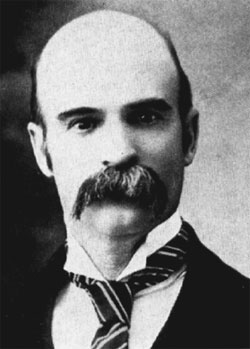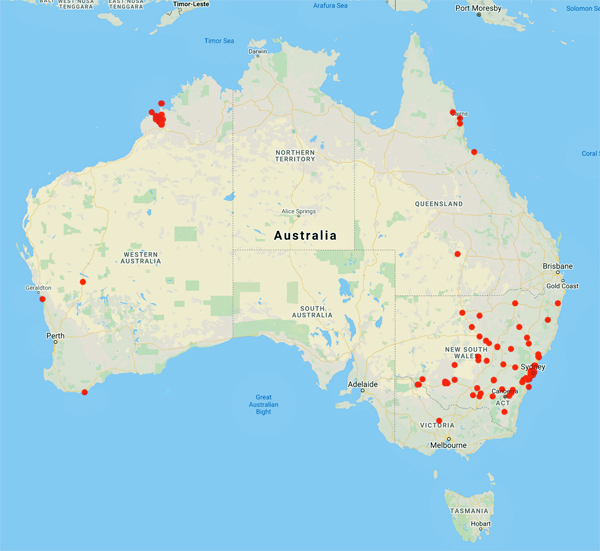

 |
 |
|
 Froggatt, Walter Wilson
(1858 - 1937)
Froggatt, Walter Wilson
(1858 - 1937)
Froggatt was born at Blackwood, Vic., on 13 June 1858 and died in Sydney, N.S.W., on 18 March 1937.
When
he was a child the family moved to Bendigo, from which locality the
type of Eucalyptus
froggattii came. In his early days he worked on the land
but later on goldfields in New South Wales and Queensland. He continued
his interest in collecting insects and was appointed entomologist and
assistant zoologist to the expedition of the Royal Geographical Society
of New South Wales to New Guinea in 1885. The following year he was
engaged as a collector by William Macleay of New South Wales and made
large collections in northern Queensland and in Derby and inland areas
of north-western Western Australia. Shortly afterwards he went to
England and gained experience in European museums and universities.
In
1889 he was appointed assistant at the Sydney Technological Museum and
in the following year published the first of more than 300 papers,
mainly in Proc. Linn.
Soc. N.S.W. He was appointed entomologist of the
Department of Agriculture of New South Wales in 1896. The
first comprehensive textbook on Australian entomology, Australian Insects,
was published in 1907; other noteworthy books were Forest Insects of Australia
(1923) and Forest
Insects and Timber Borers (1927). He investigated control
of fruit flies and other pests in overseas countries (1907), pests
attacking coco-palms and sugar cane in the Solomons (1909), in the New
Hebrides (1913) and pests attacking banana plants in Queensland (1923).
He retired from the Department of Agriculture in 1923 but was
entomologist to the Department of Forestry until 1927.
Froggatt was a member of the Linnean Society of New South Wales and its
president from 1911 to 1913. His other interests are shown by
his being a foundation member of the Wattle League, and a member of the
Wildlife Preservation Society of Australia and the Gould League of Bird
Lovers, as well as being on the first Council of the New South Wales
Naturalists Club and a president of it for many years. During
his later years he published several articles on trees in the
Australian Naturalist
Data from 458 specimens
